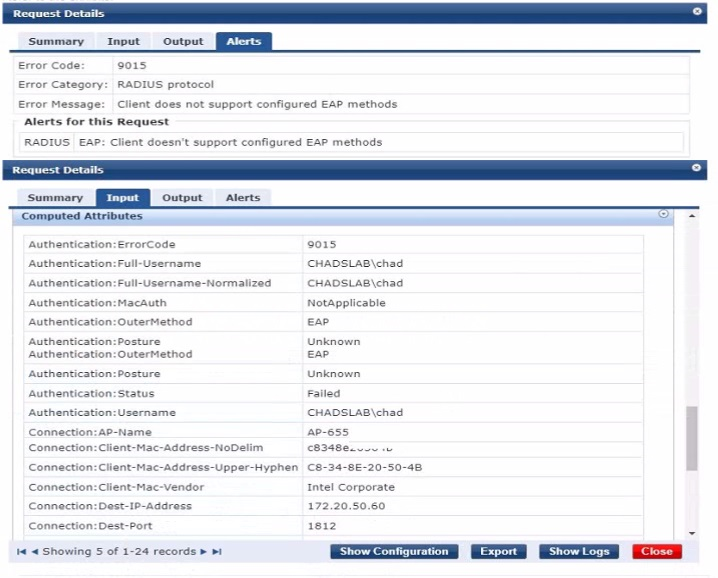At ValidExamDumps, we consistently monitor updates to the HPE7-A07 exam questions by HP. Whenever our team identifies changes in the exam questions,exam objectives, exam focus areas or in exam requirements, We immediately update our exam questions for both PDF and online practice exams. This commitment ensures our customers always have access to the most current and accurate questions. By preparing with these actual questions, our customers can successfully pass the HP Aruba Certified Campus Access Mobility Expert Written Exam exam on their first attempt without needing additional materials or study guides.
Other certification materials providers often include outdated or removed questions by HP in their HPE7-A07 exam. These outdated questions lead to customers failing their HP Aruba Certified Campus Access Mobility Expert Written Exam exam. In contrast, we ensure our questions bank includes only precise and up-to-date questions, guaranteeing their presence in your actual exam. Our main priority is your success in the HPE7-A07 exam, not profiting from selling obsolete exam questions in PDF or Online Practice Test.
You configured a tunneled SSID with captive portal and a ClearPass Guest Self Registration workflow when testing and launching the self-registration workflow, after successful registration, the login action shows the following error:

What is the best solution to resolve this error?
Including the root and intermediate certificates in the captive portal certificate for the gateway will resolve the error seen during the login action after successful registration. This is necessary to ensure the SSL/TLS handshake can be completed successfully, as the client browser needs to validate the entire certificate chain.
A customer's infrastructure is set up to use Doth primary and secondary gateway clusters on the SSID profile What is a valid reason for the AP to failover to the secondary gateway cluster?
In Aruba's infrastructure, the Access Points (APs) are configured with primary and secondary gateway clusters to ensure connectivity and resiliency. The APs will failover to the secondary gateway cluster if they are unable to reach the primary gateway cluster, even if the primary cluster is operational. This mechanism ensures that the APs maintain connectivity to the network infrastructure for continuous service delivery.
in a WLAN network with a tunneled SSID. you see the following events in HPE Aruba Networking Central:

The customer asks you to investigate log messages What should you tell them?
The event log showing PMK (Pairwise Master Key) and OKC (Opportunistic Key Caching) key add/update and delete operations is indicative of normal client behavior in a WLAN environment. These events are part of the standard process for maintaining client session security and do not necessarily indicate any issue.
A customer has deployed an AOS 10 mobility gateway cluster consisting of three controllers at a single site The WLAN is configured to tunnel wireless device traffic to the AOS 10 mobility cluster. The clients are authorized to use WPA2-Personal. An end-user has opened a ticket with the helpdesk stating they cannot connect their client device to the network. There are other devices currently associated with the SSID with no issues.

Reviewing the output, what Is the issue?
The issue indicated by the output is an invalid pre-shared key (PSK). The logs show multiple failures during the WPA2 key exchange process, which points to a mismatch between the PSK configured on the client device and the PSK expected by the AOS 10 mobility gateway.
A Windows device attempts to connect to an 802.1X network but it is not receiving the correct role. TEAP has been configured as the only authentication method in ClearPass. The wireless configuration is correct.
Exhibit.

What is me most likely cause?
The issue likely stems from the Windows device not being configured to use TEAP (Tunneled Extensible Authentication Protocol) as specified in the ClearPass configuration. TEAP is an EAP method that encapsulates an inner EAP method for secure authentication. The Windows device must have TEAP enabled and correctly configured in its network settings to authenticate successfully on the network using ClearPass.